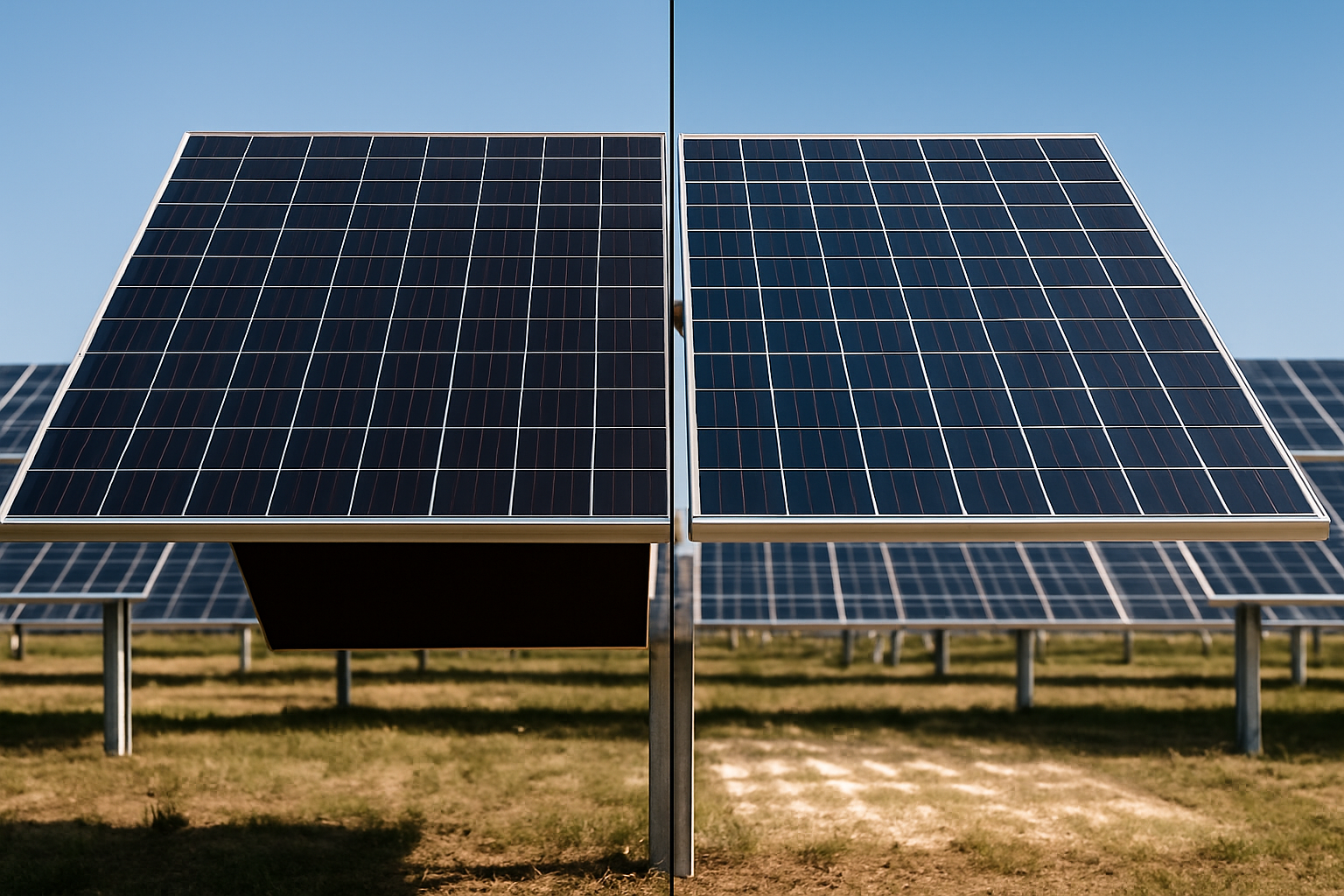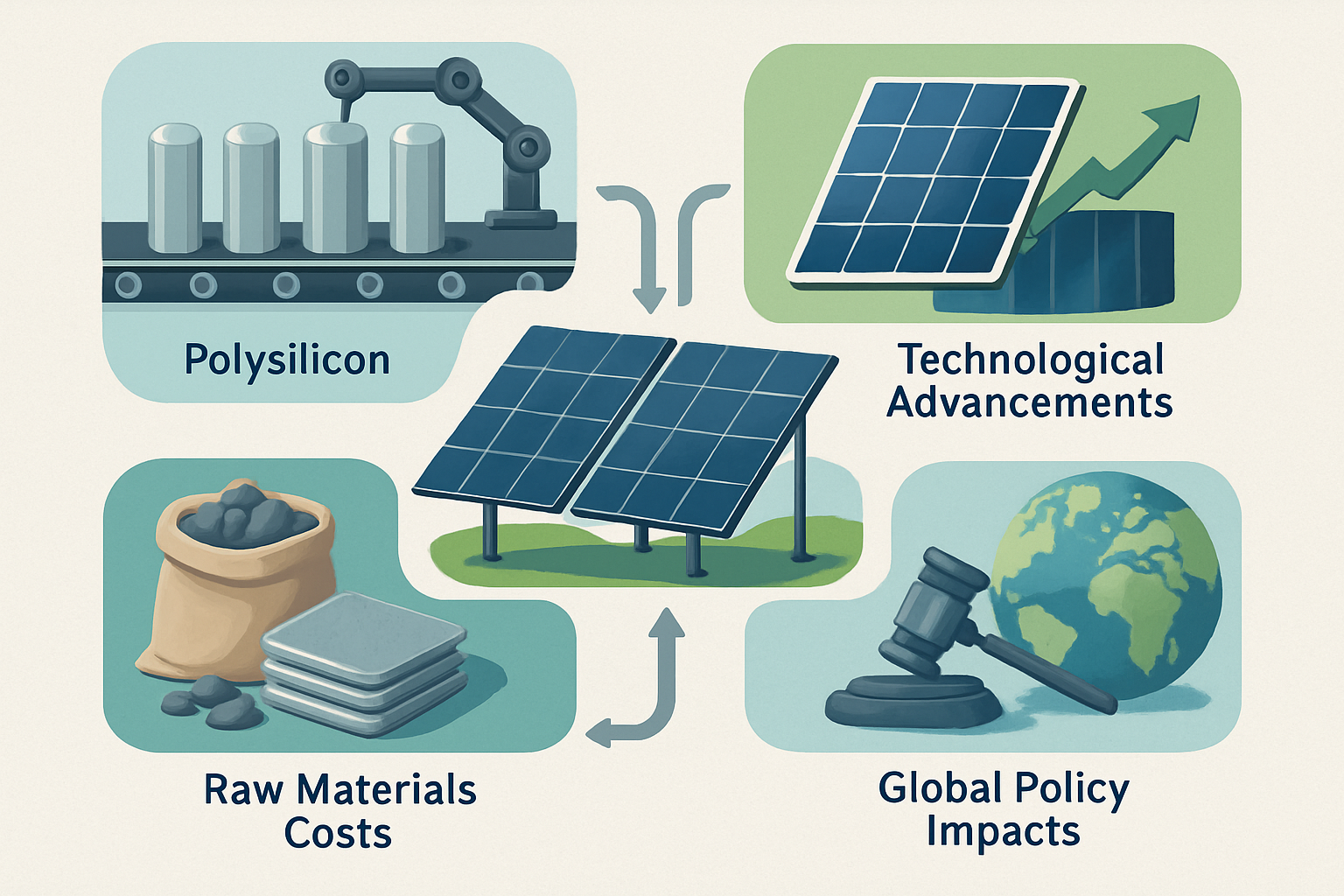Solar energy offers a powerful path to energy independence. However, like any technology, photovoltaic (PV) panels experience a gradual reduction in performance over time. This phenomenon, known as PV degradation, is a critical factor for anyone investing in solar. Understanding how different climates influence these degradation rates is paramount for maximizing your system's lifespan and ensuring consistent energy output.

The Reality of Solar Panel Degradation
Solar panel degradation refers to the natural decline in a PV module's power output capacity. This is not a sudden failure but a slow, continuous process. Several mechanisms contribute to this decline, each impacting the panel's ability to convert sunlight into electricity.
Understanding Degradation Mechanisms
- Light-Induced Degradation (LID): This initial power loss occurs within the first few hours or days of a panel's exposure to sunlight. It is primarily due to the interaction of boron and oxygen in the silicon wafer. Modern manufacturing techniques have significantly reduced LID, but it remains a factor.
- Potential-Induced Degradation (PID): High voltage differences between the solar cells and the grounded module frame can cause ions to migrate, leading to power loss. PID is more prevalent in high-humidity environments and high-voltage systems.
- Encapsulant Delamination and Yellowing: The encapsulant material (often EVA) protects the solar cells. Over time, UV radiation and heat can cause it to yellow, reducing light transmission to the cells. Delamination, where the encapsulant separates from the glass or backsheet, allows moisture ingress.
- Corrosion: Moisture and oxygen can corrode metallic components within the module, such as busbars and contacts, increasing electrical resistance and reducing power output.
- Microcracks: These tiny cracks in the solar cells can arise from mechanical stress during manufacturing, transport, installation, or from environmental factors like wind and thermal cycling. While often invisible, they can lead to localized hotspots and reduced performance.
Why Degradation Matters for Your Investment
The gradual loss of power output directly impacts the energy yield of your solar system. A higher degradation rate means less electricity produced over the system's lifetime, affecting your return on investment (ROI) and the overall financial viability of your solar project. For instance, a system degrading at 1% per year will produce significantly less power over 25 years than one degrading at 0.5% per year.
Climate's Profound Influence on PV Longevity
The environment where solar panels operate plays a significant role in how quickly they degrade. Different climatic conditions expose panels to varying stressors, accelerating or decelerating specific degradation mechanisms.
Temperature Extremes and Thermal Cycling
High ambient temperatures can accelerate chemical degradation processes within solar cells and module materials. For example, the rate of encapsulant yellowing and delamination often increases with heat. Conversely, cooler climates tend to experience slower degradation rates. However, rapid and frequent temperature fluctuations, known as thermal cycling, can induce mechanical stress, leading to microcracks in cells and solder joint fatigue. This is particularly relevant in regions with large diurnal temperature swings.
Humidity, Moisture, and Precipitation
Environments with high humidity and frequent rainfall are particularly challenging for PV modules. Moisture can penetrate the module through microscopic defects or permeable backsheets, leading to corrosion of internal components. High humidity also exacerbates PID, as water acts as a medium for ion migration. Delamination is more common in humid climates, compromising the protective seal of the module.
Ultraviolet (UV) Radiation Exposure
Intense UV radiation, common in sunny, high-altitude, or low-latitude regions, directly attacks the polymer materials used in solar panels, such as the encapsulant and backsheet. This can cause discoloration, embrittlement, and cracking, reducing light transmission and exposing the cells to further damage.
Other Environmental Stressors
- Dust and Sand: Arid and desert regions often experience significant dust accumulation and sandstorms. Dust can reduce light absorption, leading to "soiling losses." Abrasive sand particles can also physically damage the module surface, causing micro-scratches.
- Wind: Strong winds exert mechanical stress on panels and mounting structures, potentially causing microcracks or structural fatigue over time.
- Hail: While less frequent, severe hail events can cause direct physical damage to the glass surface of solar panels, leading to cracks or shattered modules.
- Salt Mist: Coastal areas expose panels to corrosive salt mist, which can accelerate corrosion of frames and electrical components, impacting overall system reliability.
Regional Degradation Trends: What the Data Reveals
Understanding how degradation rates vary by region helps in making informed decisions about technology selection and system design. Research has provided valuable insights into these trends.
For example, fleet-scale data from the U.S. PV fleet indicates that the median performance loss is approximately 0.75% per year. This analysis also revealed that the degradation rate is climate-dependent, with panels degrading slower in cooler climates. This data highlights that while a general average exists, localized conditions significantly influence actual performance over time. The Success Story—A Clearer Picture of U.S. Solar Power Performance from energy.gov emphasizes the importance of direct measurements from diverse PV systems to achieve a higher level of confidence in these degradation estimates.
Typical Degradation Impact by Climate Zone
The table below illustrates general trends for how different climate zones might influence PV degradation. These are broad categorizations, and specific microclimates can vary.
| Climate Zone | Key Climatic Stressors | Typical Degradation Impact |
|---|---|---|
| Hot & Arid (e.g., Deserts) | High temperatures, intense UV, dust/sand, large diurnal temperature swings. | Accelerated encapsulant yellowing, increased microcracks from thermal cycling, soiling losses, abrasive damage. |
| Hot & Humid (e.g., Tropical) | High temperatures, high humidity, heavy rainfall, intense UV. | Increased PID, corrosion, delamination, encapsulant degradation, fungal growth. |
| Temperate (e.g., Central Europe, parts of U.S.) | Moderate temperatures, moderate humidity, thermal cycling, occasional extreme weather. | Balanced degradation factors, often lower overall rates than extreme climates, but still subject to thermal cycling stress. |
| Cold (e.g., Northern Latitudes) | Low temperatures, snow/ice, freeze-thaw cycles, lower UV intensity. | Slower chemical degradation, but potential for mechanical stress from snow loads and freeze-thaw cycles. |
| Coastal | Salt mist, high humidity, strong winds. | Accelerated corrosion of metal parts, delamination, potential for mechanical stress. |
Mitigating Degradation and Maximizing Lifespan
While degradation is inevitable, you can significantly slow its rate and extend your solar system's productive life through careful planning and maintenance. Our years of experience in the solar industry have shown that a proactive approach yields the best results.
Selecting High-Quality Modules and Components
The foundation of a durable solar system lies in the quality of its components. Opt for PV modules from reputable manufacturers that use advanced materials and rigorous quality control. Look for certifications that indicate resistance to specific environmental stressors, such as salt mist corrosion or high-humidity performance. Modules with robust glass, durable backsheets, and high-quality encapsulants offer better protection against the elements.
Optimized System Design and Installation
Proper system design considers the local climate. Ensure adequate ventilation behind panels to dissipate heat, especially in hot regions. Correct tilt angles can help shed dust and snow. Professional installation is crucial to prevent mechanical stress during mounting, ensure proper wiring, and secure connections that resist environmental wear. A well-designed system also accounts for potential shading, which can lead to hotspots and accelerated degradation.
Proactive Monitoring and Maintenance
Regular monitoring of your system's performance allows you to detect any abnormal power drops early, indicating potential degradation issues. Routine cleaning, especially in dusty or polluted areas, prevents soiling losses. Periodic inspections can identify physical damage, loose connections, or signs of delamination before they escalate into major problems. Addressing these issues promptly can significantly extend the lifespan of your system.
The Role of Integrated Energy Storage Solutions
Integrating a robust energy storage system can further enhance the resilience and reliability of your solar setup. Our home energy storage systems, which combine high-performance lithium iron phosphate (LiFePO4) batteries with hybrid inverters and solar panels, provide a buffer against the natural variations in solar output, including those caused by gradual degradation. By storing excess energy, you ensure a stable power supply even as your panels age, contributing to greater energy independence. Our off-grid solar solutions also leverage these reliable battery technologies to deliver consistent power in remote or challenging environments, where grid reliability may be limited.
Ensuring Lasting Solar Performance
Understanding PV degradation rates across different climates is not merely a technical detail; it is fundamental to realizing the full potential of your solar investment. By recognizing the specific environmental challenges your system faces and implementing proactive strategies—from selecting high-quality components to integrating advanced energy storage—you can significantly mitigate degradation. This approach ensures your solar panels continue to deliver reliable, scalable power, empowering you with lasting energy independence for decades to come.
Frequently Asked Questions
What is the average PV degradation rate?
The median performance loss for the U.S. PV fleet is around 0.75% per year. However, this rate can vary based on module technology, manufacturing quality, and crucially, the specific climatic conditions of the installation site.
How do high temperatures affect solar panel degradation?
High temperatures accelerate chemical degradation processes within the solar cells and module materials, such as encapsulant yellowing and delamination. While panels are designed to withstand heat, prolonged exposure to extreme temperatures can lead to faster degradation compared to cooler environments.
Can I prevent solar panel degradation entirely?
Complete prevention of solar panel degradation is not possible, as it is a natural aging process. However, you can significantly slow down the rate of degradation through careful module selection, optimal system design, professional installation, and regular monitoring and maintenance. Integrating energy storage can also help manage the impact of reduced output over time.
Does humidity significantly impact solar panel lifespan?
Yes, high humidity and moisture are significant factors. They can lead to corrosion of internal components, exacerbate Potential-Induced Degradation (PID), and cause delamination of the encapsulant, all of which reduce the panel's performance and lifespan.





Leave a comment
All comments are moderated before being published.
This site is protected by hCaptcha and the hCaptcha Privacy Policy and Terms of Service apply.